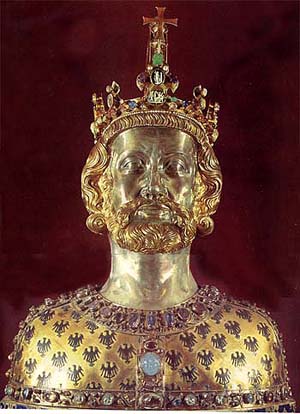
By Patrick Hunt –
Tradition and some evidence have it that Charlemagne (768-814) revitalized the remnant Roman viticulture in his Frankish kingdom, especially in the northern Rhine region and also oversaw its viticultural progress. Alsace has been famous for wine since Roman colonists settled there; some also believe that the Riesling vine derives from the Roman argitis minor vine varietal [1] possibly hybridized or cultivated by Carolingian vinegrowers under Charlemagne’s orders. According to his biographer Einhard, Charlemagne renamed the month of October in Frankish as windume manuth, or “wine harvest month” [2] Einhard also makes it clear that Charlemagne himself was extremely temperate:
“He abominated drunkenness in anybody, much more in himself and those of his household. He was so moderate in the use of wine and all sorts of drink that he rarely allowed himself more than three cups in the course of a meal.” [3]
Charlemagne was one of the prime movers in ending the Dark Ages and the Carolingian Renaissance is named after him for his capable administration that brought back order and learning to Europe after the collapse of the Roman Empire. [4] While the Romans had already established Rhine viticulture in the Moselle, Pfalz, Rheinhessen and Alsace regions, [5] in concert with his other ecclesiastic policies, Charlemagne’s Council of Aachen in 814 reorganized monastic winemaking practices, recommending the church canons to grow vines for wine, certainly beyond the needs for Eucharist. [6]
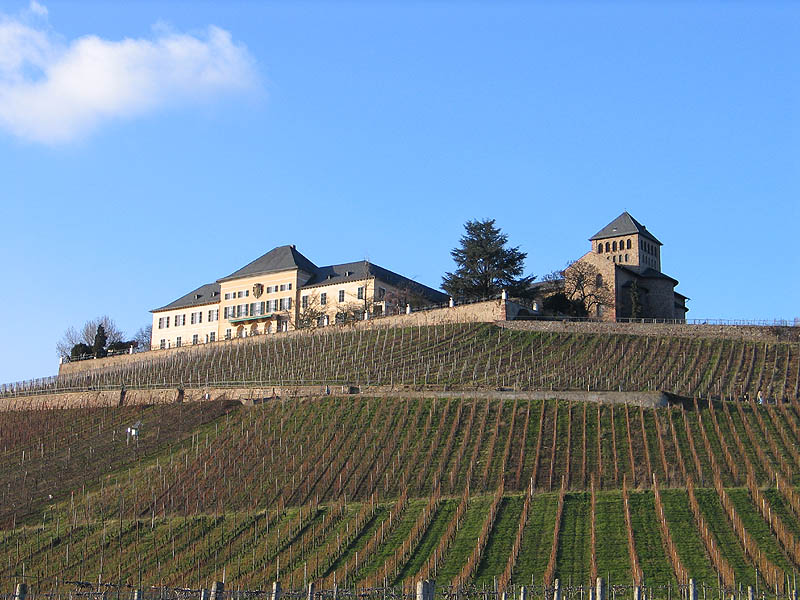
Legend suggests that Charlemagne also stimulated viticulture in the area of Schloss Johannisberg and the production of what would eventually become Riesling, but this is difficult to prove, since the Benedictine monastic site is not recorded until 1100 and the name Riesling is not officially recognized until around 1435 near Mainz with a merchant invoice for riesslingen in die wingarten and Duke Rene of Lorraine is credited for connecting Alsace with fine Riesling in 1477 but Riesling is not firmly noted until Hieronymus Bock (1498-1554) in the 1552 edition of his herbal.[7] The date of 1628 is a watermark year for absolute documentary proof of Riesling grapes planted in Alsace. On the other hand, Stolz believes Riesling was introduced as early as 843 in the Rheingau during Carolingian rule under Louis II the German where Riesling may also be the gentil aromatique grape. [8] Whatever legacy of Charlemagne and the Carolingian Era can be connected to viticulture, it is both history and the present that should appreciate this great king’s commitment to stabilizing civilization and recognizing wine as one of its most important gifts.
The Rheingau region of Germany is another area associated with Roman viticulture, since they planted vines nearly everywhere they settled. Roman glass artifacts have been found around Rudesheim and a castrum was in nearby Bingen across the river as well as a Roman bridge. The tenth century Bromserburg castle was also built over Roman fortifications. Less challenged than many viticultural areas, Rheingau is particularly favorable since the Rhine River runs east-to-west here and thus vineyards can face south for maximum solar exposure, with Riesling grapes growing in 82% of the area under vine in 1990 [9]
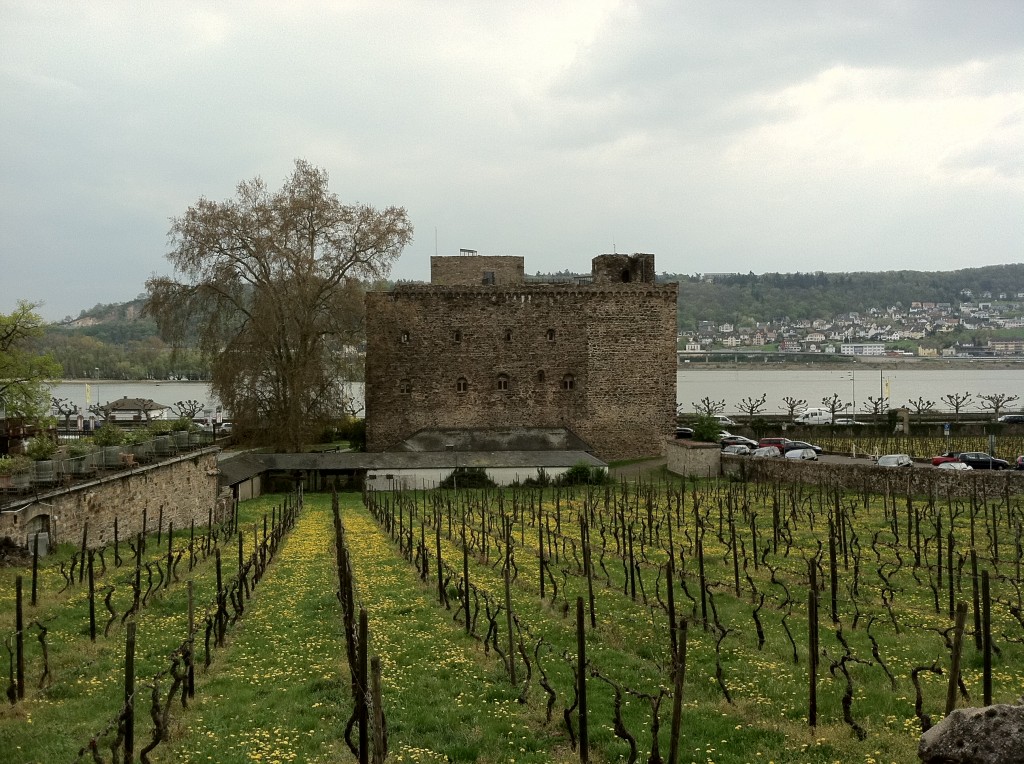
By contrast, Alsace has been associated with the better Gewurztraminers, derived from the Traminer grape – grown in Alsace since the Middle Ages – adding the descriptive gewurz as “spice” better “perfume”. Sadly, this wine is often unjustly maligned by snobby so-called connoisseurs as made for plebeian palates, found over the top for being too heady and richly exotic in both flavor and rosy and lychee fragrance, let alone risible for its pink-hued grape. Late harvest Gewurztraminers, however, are far more serious wines, not to be dismissed so easily. Broadbent, among many others, has long praised Alsace for its storied wines, especially since World War II as fascinatingly told in the delightful Kladstrup book Wine and War [10] which I brought along for great reading on this trip and Broadbent lists great vintages from famous Alsatian wine dynasties like the Hugel Family and others like Trimbach and Schlumberger, all recognized globally. [11]
This author was in the Rheingau and Alsace lecturing on a Rhine Cruise in April (2012) and tasted a range of Rieslings and Gewurztraminers in Rudesheim am Rhein, Strasbourg, Colmar and Wittolsheim. Talking with several growers and winemakers and comparing these wines added depth to prior experience, especially satisfying being in the areas noted for production of both wines.
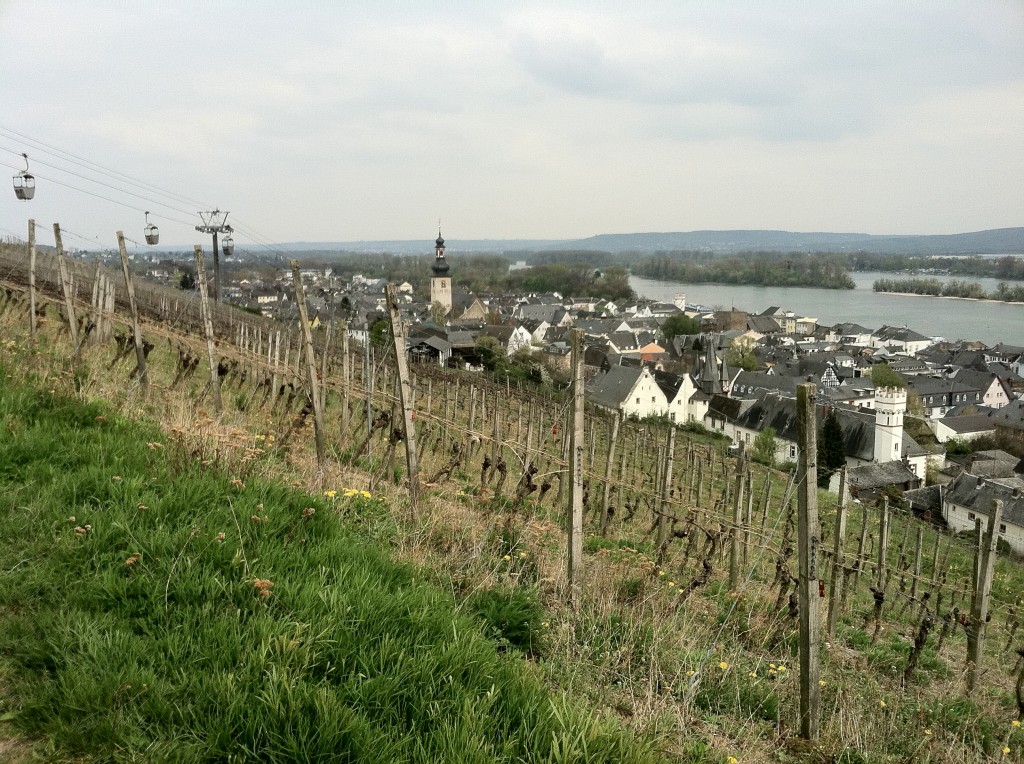
On the ridge above the town of Rudesheim we were taken to a vineyard tasting (Weinprobe) just southwest of the Niederwald-Denkmal monument at the edge of the forest. The old town itself has many weinstuben (wine tasting houses) with many on the festive Oberstrasse and Drosselgasse – and their common half-timbered architecture recalls the medieval importance of the town we could see below around the 15th century Pfarrkirche St. Jakobus church.
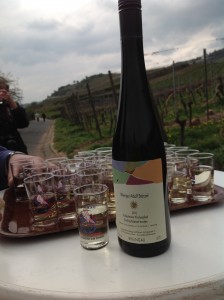
We started tasting local Rieslings near the Bromserburg castle ruin with Roman foundations) – now a wine museum – and because the buds were just forming before leafing, the rows of the vine parcels were colorful with yellow dandelion flowers. Local winemaker Carsten Hempel explained the local viticulture as we continued tasting with bottles on tables set up along the slope. In our three stops climbing the ridge toward the Klosterlay parcels we tasted three of Rudesheim’s wines, including Weingut Adolf Storzel Kirchenpfad Riesling Kabinett trocken 2010, and Weingut Adolf Storzel Berg Rottland Riesling Spatlese 2010. Both of these Rieslings were refreshingly light and delicious with 9% alcohol. Hempel also works in Geisenheim (home of the prestigious viticultural school, the Geisenheim Grape Breeding Institute, which also awards higher academic degrees in winemaking, the only such institution in Germany).
Geisenheim itself just to the east is also adjacent to Schloss Johannisberg, another kilometer further northeast, and the almost equally famous pilgrim destination of Marienthal Monastery. Since Geisenheim was first mentioned in 772 in Carolingian documents, the Charlemagne wine connections are not without substance. Rudesheim’s riesling viticulture has its vertical rows parallel to the slope. i.e., facing downward rather than across the topography. The narrow rows also made machine harvesting difficult, so that the majority of picking is by hand. Every other row is offset with natural growth to retain topsoil and yet limit half the plant competition, an experimental conclusion after a compromise between having every row planted but with a resulting weakening of the wine since sharing the soil minerals reduced vine vigor. Like all viticultural areas, the geology of the Taunus Massif north of the Rhine directly affects the vines, being high in quartzite and Rudesheim loess is noted for that acidic high silicate. For geography, it might also be interesting to note that the 50th latitude north runs through Geisenheim vineyards. Recent 2006 statistics also show that the hardy, cold-resistant Riesling with its late ripening, thick-skinned grape is logically the most planted vine stock in both Germany and Alsace, comprising 21 % with over 21,000 hectares (52,000+ acres) and 22 % with over 3300 hectares (8000+ acres) of all vines in those countries respectively. [12]
One rising star of Rudesheim’s world class Rieslings is Johannes Leitz of Leitz Weingut, extolled in the New York Times and by Riesling guru Stuart Pigott of Planet Wine and piling up Gold Medals in quite a few categories of the 2010 International Wine Challenge in London, also awarded Gault Millau’s 2010 Winemaker of the Year. It would be a real coup if one can obtain the intense Leitz 2010 Kaisersteinfels, Leitz 2010 Rottland Hinterhaus and Leitz 2010 Rudesheimer Berg Schlossberg Riesling Ehrenfels or even the Leitz 2009 Magic Mountain Riesling blended from different Leitz parcels, not just alluding to Thomas Mann but also the steep terraces above the Rhine around Rudesheim in vineyards like Berg Schlossberg, Drachenstein and Berg Kaisersteinfels. [13] J. Keller at Weingut Leitz told me that the title “Magic Mountain” (Zauberberg) is a local reference to the Rudesheimer Berg, the main ridge above the town.
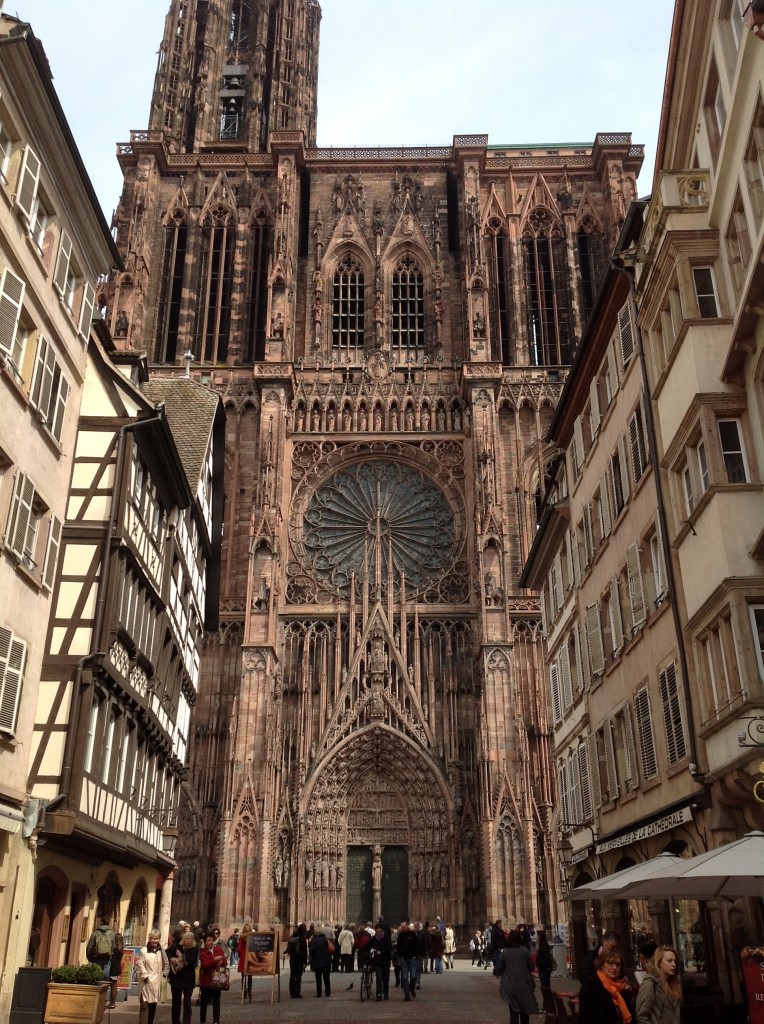
Upriver (south) of Rudesheim, while Heidelberg does not lie in as famous as a wine-producing area along the Neckar as the Rheingau, its fame lies elsewhere and it is certainly a beer and wine-consuming city, especially at the university and the among what were the thirsty nobles. Although now Heidelberg castle is mostly an uninhabited romantic ruin, one can attempt an impressive gauge of the amount of wine stored in what may one of the world’s largest “barrels”. Deep inside Heidelberg Castle this notorious wooden barrel is easily 18 feet high, with a capacity of around 228,000 liters, no doubt for aristocratic bragging rights of the ruling Rhineland Palatinate Electors.
To the south of Heidelberg, even further upriver along the Rhine and in Alsace, France to the west, Strasbourg’s cathedral towers over the medieval city of canals and nostalgic half-timbered buildings. This is one of the world’s most sophisticated cities and a bookish haunt, for several decades home to pioneer printer Johannes Gutenberg whose bronze statue adorns the Place Gutenberg just at the terminus of the Rue Merciere viewing the cathedral portal at its most dramatic approach. Along the Ill River on St. Nicolas Quai very near St. Nicolas Church, I noticed the home of Sebastien Brant (1457-1521), Renaissance Humanist and satirist author in 1494 of Ship of Fools (Das Narrenschiff). Having an original illustrated woodcut from the 1494 satire made me appreciate Brant all the more.
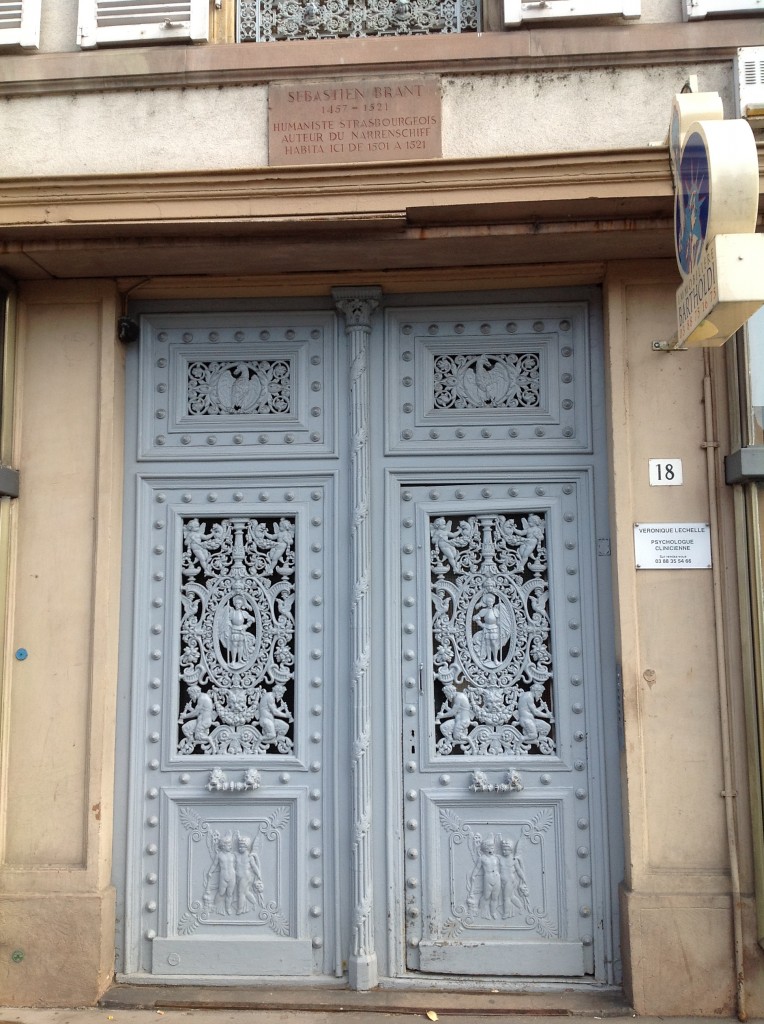
Highly recommended in Strasbourg’s famed gastronomy is the perfect pairing of foie gras and Alsatian Gewurztraminer. Trying this feat twice in one day (necessarily followed in this case by cycling along the canals to attempt diluting the bloodstream cholesterol) is a huge temptation to which one can easily succumb. In the Place de la Cathedral (Muensterplatz), the elegant medieval (begun in 1427) restaurant-hotel Maison Kammerzell offered an excellent slab of foie gras with Gewurz gel and red peppercorns on toast and a green glass of Alsatian Mosbach 2010 Gewurztraminer from Marlenheim, a lunch that I could not refuse. Just to make sure, I had a similar second Strasbourg lunch in the Petite France Tanners District at the chic La Corde Linge in the Place Benjamin Zix. Only slightly extravagant but guiltless, the savory Strasbourg foie gras was just as good but this time the bibendum was a late harvest Alsatian Domaine Gerard Metz Gewurztraminer Vendages Tardives from Itterswiller at the foot of the Vosges Mountains.
A brief word about Strasbourg’s Gothic Cathedral (Notre Dame de Strasbourg) includes that it was built over a Roman sanctuary in the then town of Argentoratum followed by a Palaochristian sanctuary; later buildings on the site were a gold and gem decorated Carolingian church where St. Remigius was buried. It also has some of the most beautiful stained glass windows in the world, especially the thirteenth century “Emperor” windows with brilliant secondary colors including the green, purple and orange more typical for German crafted hues than medieval French primary colors such as red and blue. Like the rest of the cathedral constructed out of pinkish red sandstone, the cathedral’s north tower pinnacle (circa 1439) was for centuries (1647-1874) the highest in the world at 466 feet, and its 19th c. astronomical clock right of the apse is one of the most precise in history – practically a computer telling equinox leap year, etc. – and along with mythological and zodiacal features also has a parade of unusual mechanical figures like an hourglass and death figure as well as Christ and the Apostles passing in front of him. Goethe said of this cathedral, “The more I contemplate the facade of the Cathedral, the more I am convinced of my first impression that its loftiness is linked to its beauty.” Elsewhere he said it is a “sublimely towering, wide-spreading tree of God.”
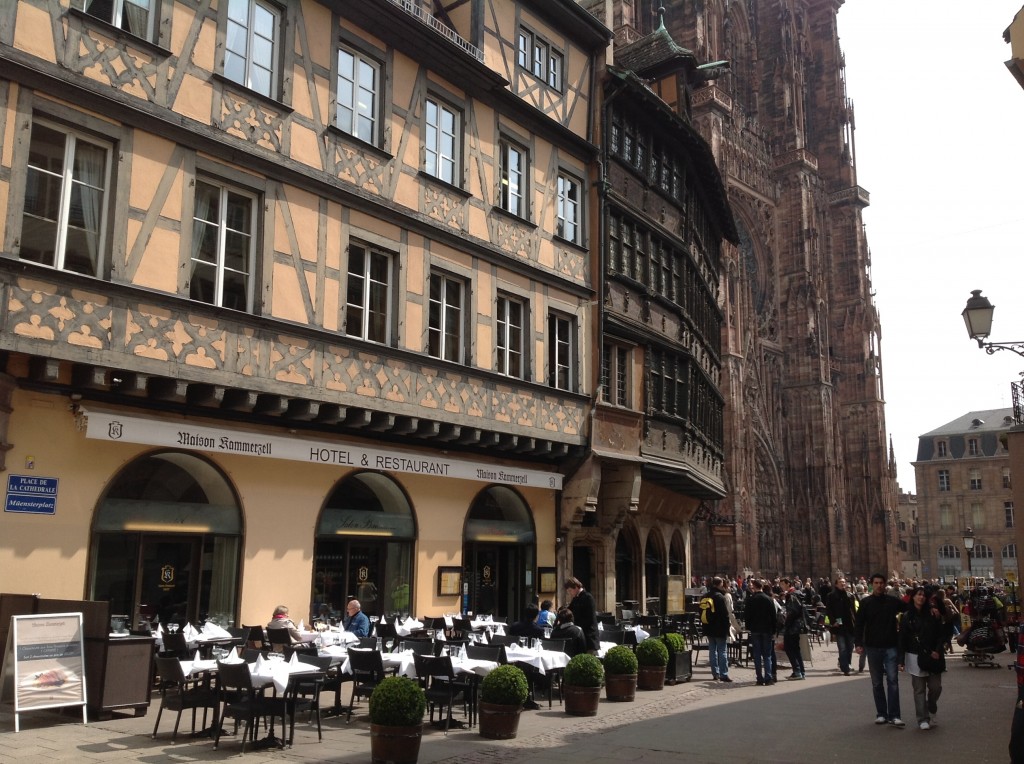
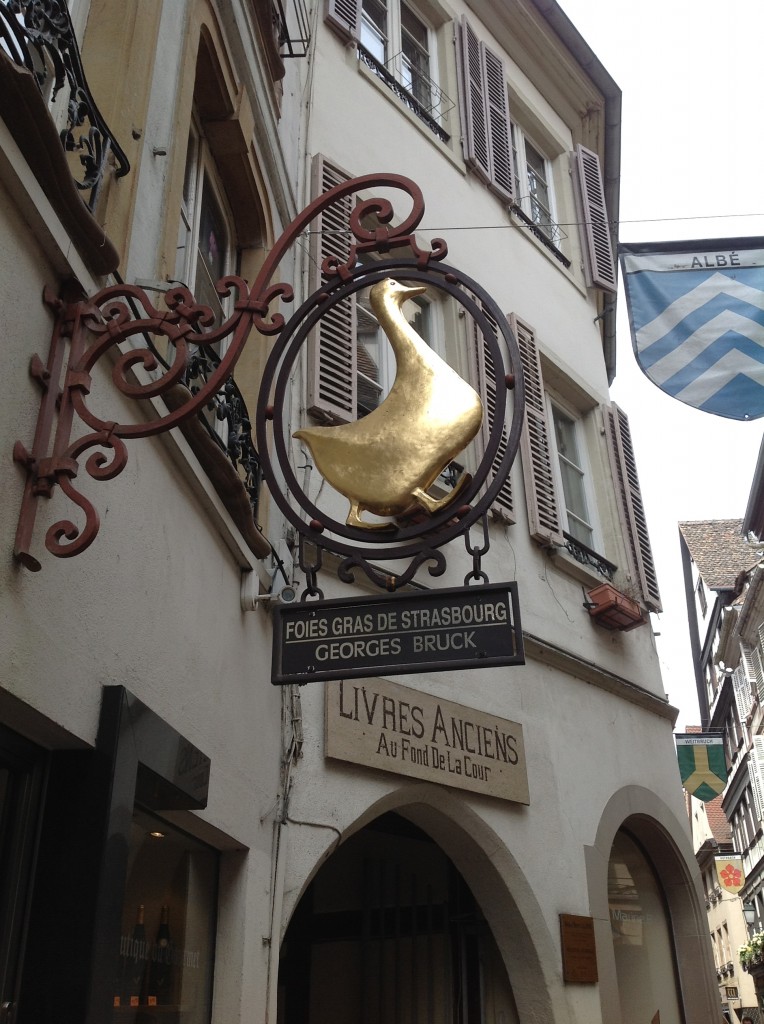
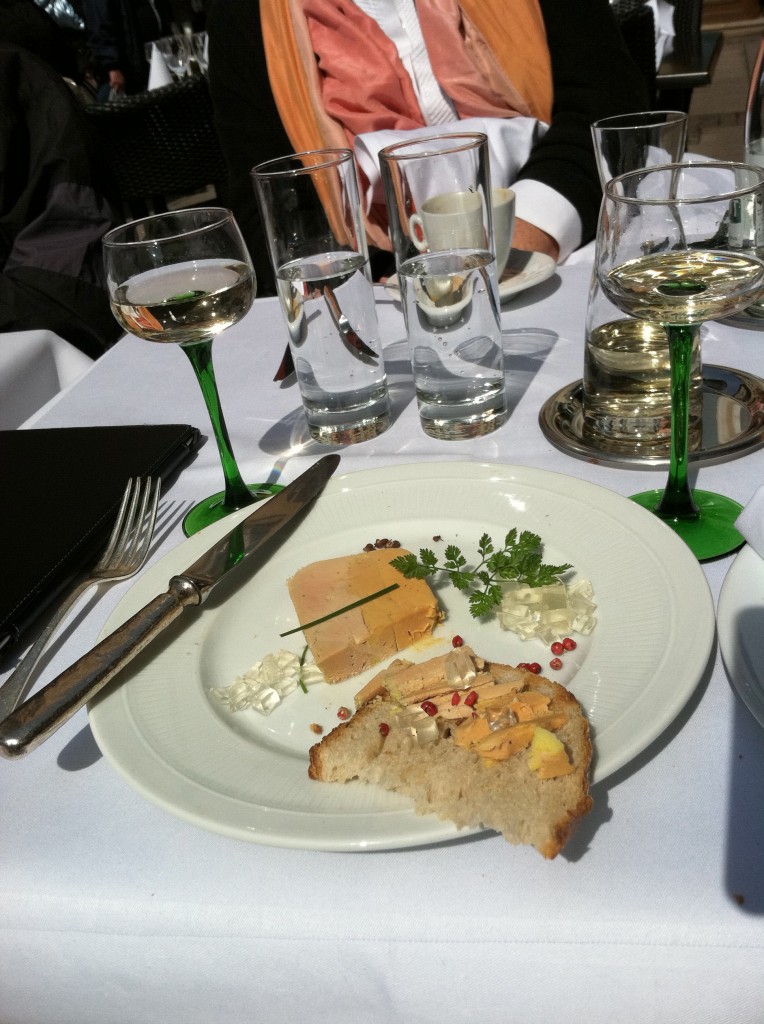
West across the Rhine River, Colmar is rightly hailed as the City of Art, with La Petite Venise canals connecting to the Louch River, a Rhine tributary, and one of the best surviving late medieval old towns in Europe. Colmar was also the next lovely amble where I had another refreshing Riesling in the covered market right before seeing the birth house and statue of artist Martin Schongauer (1448-91) at the Dominican Church. Schongauer’s 15th century house is in the old town across from the more picturesque Maison Pfister, and his statue is outside the old 13th century Dominican Church, home to his delicate International Gothic Style 1473 masterpiece La Vierge au buisson de roses; the old Dominican Church is now a museum. Schongauer was much admired by Albrecht Durer, who learned this predecessor’s pioneering cross-hatching technique, developing into his own signature style for his famous woodcuts and prints. Colmar is also home for the incredible 1506-15 Isenheim Altarpiece of Mathias Grunewald (c. 1470-1528) in the Unterlinden Museum.
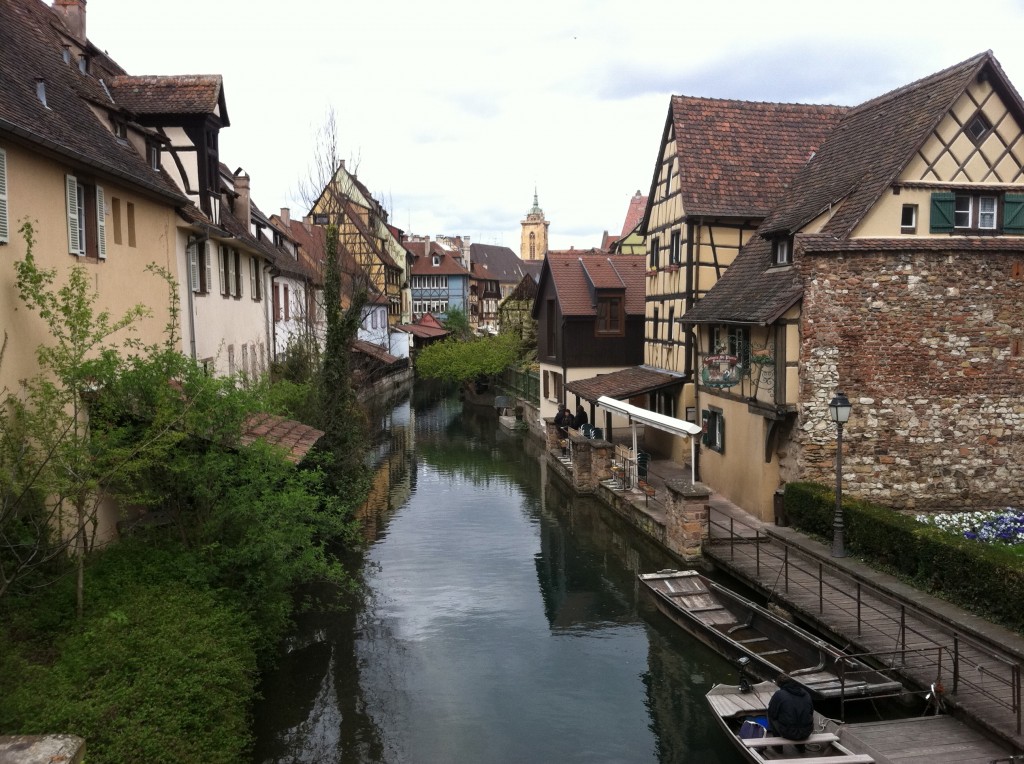
In the foothills of the Vosges Mountains we had an Alsatian wine tasting at Wettolsheim for a Grands Vins d’Alsace experience. Jacques Mann of Maison Wunsch et Mann, founded in 1763, offered a winetasting of Alsatian 2011 Riesling, Alsatian 2010 Gewurztraminer. Maison Wunsch et Mann proudly display a Gold Medal (Medaille d’Or) in 1994 at the Colmar Grand Concours des Vins d’Alsace for at least seven of their lots, and among others, a Silver Medal (Medaille d’Argent) at the Concours International for a world-class Riesling du Mondiale in 2009 for their Riesling 2007 Grand Cru Steingrubler, grown on calcareous marl and sandstone and praised by Stevenson. [14] Another Wunsch et Mann Grand Cru is their Pfersigberg Gewurztraminer. It is worth noting that in both Rheingau and Alsace, the goal is for a low yield of fruit to make the highest quality wines. The Riesling wines Jacques Mann offered certainly filled that high distinction with their dry, crisp acidity. Jacques finished our tasting with a Cremant d’Alsace traditional methode champenoise sparkling wine.
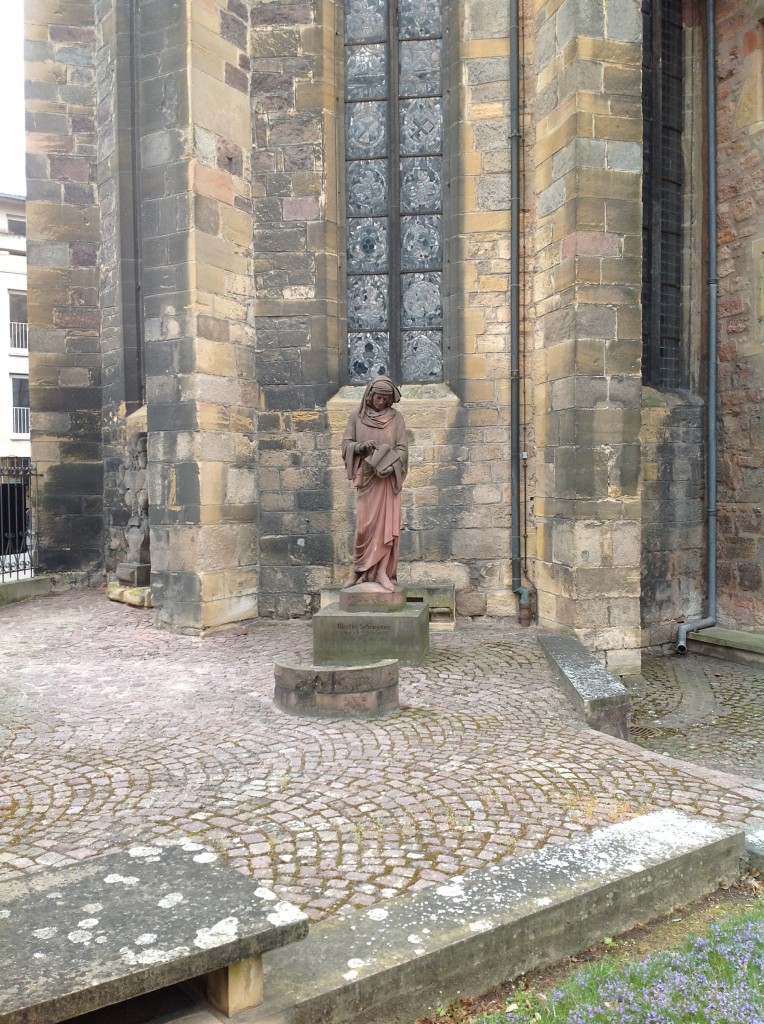
A few last cultural rather than solely viticultural comments for Rhine contexts, especially places like Strasbourg and Rudesheim. When the enterprising Romans moved north, they brought vines with them that would adapt to the climate and terrain. An antiquarian himself, Goethe was a student at the famed Strasbourg University during on of its German periods and later Louis Pasteur was a professor of chemistry at the university (now the medical school here is named after him). Here too, Albert Schweitzer studied theology and played Bach’s profound organ music. Mozart played the St. Thomas Church Silbermann organ in Strasbourg in 1778. Naturally, I was thrilled to visit a vintage secondhand bookseller in Strasbourg’s Place Kleber where I purchased a weathered centuries-old leather bound biography of Mozart, wondering if he had wandered somewhere nearby himself in 1778. Furthermore, back in the Rheingau, Rudesheim and its outliers were the environs of medieval 12th century polymath composer, poet, scientist Abbess Hildegard von Bingen, several of whose monasteries were nearby in Eibingen, Rupertsberg and in Bingen across the river. Rudesheim was also a town beloved to Johannes Brahms, who loved to play new piano compositions here on frequent visits to the Rhine Valley, staying with the Beckerath family and there is consequently a Brahms chamber music festival, the Brahms-Tage, here at the Villa Sturm. Below Rudesheim, of course, is the Gorge of Lorelei and Rhine Maidens made even more famous by not just by Wagner but by Heinrich Heine’s lyrics. Thus it should be no surprise that Rhine wines easily accompany music and poetry, other cultural legacies in a place where Romans flourished and revived by the now vanished but greatly influential court of Charlemagne, who advocated literacy and the arts that followed when the light of civilization blazed again out of Europe.
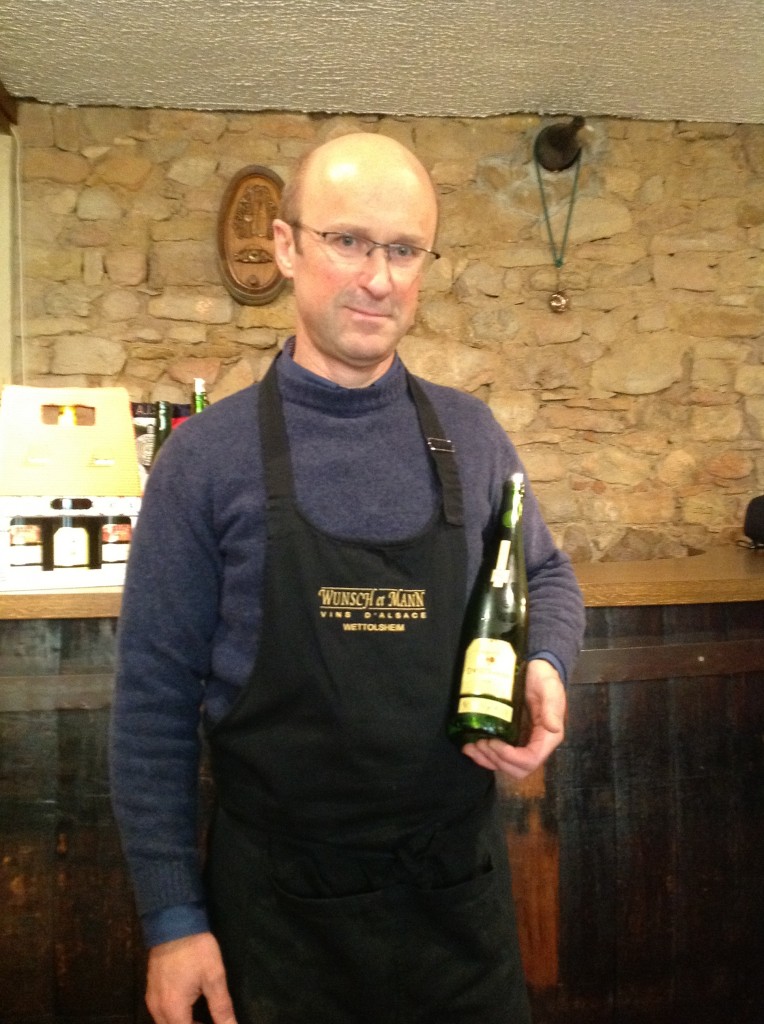
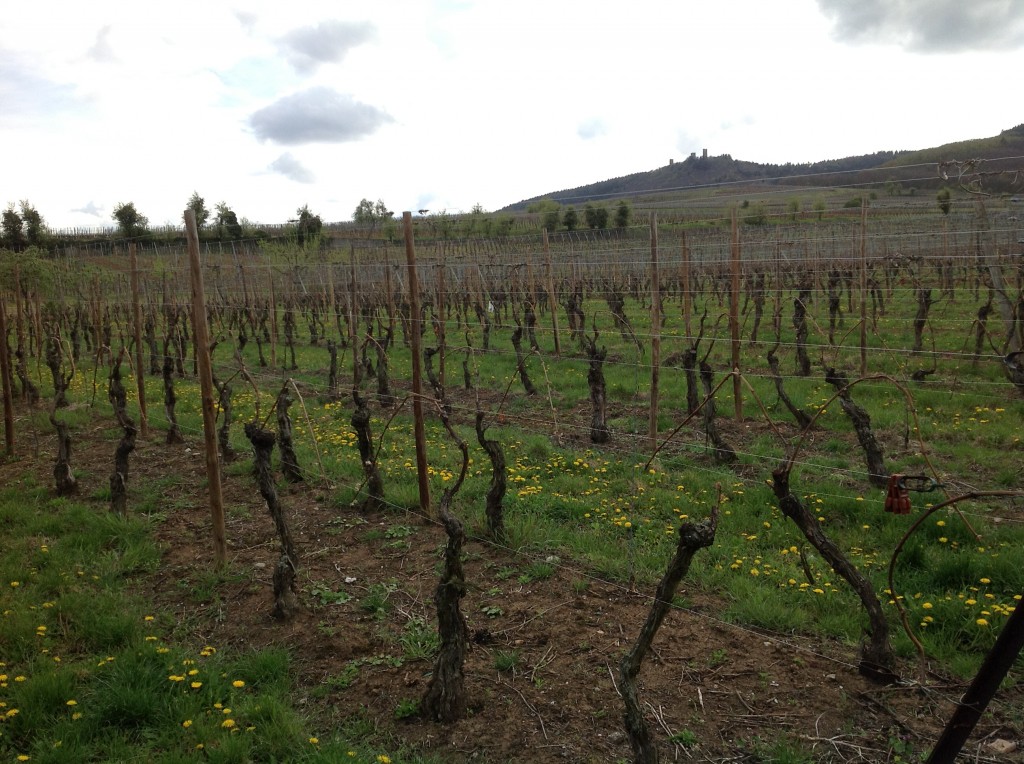
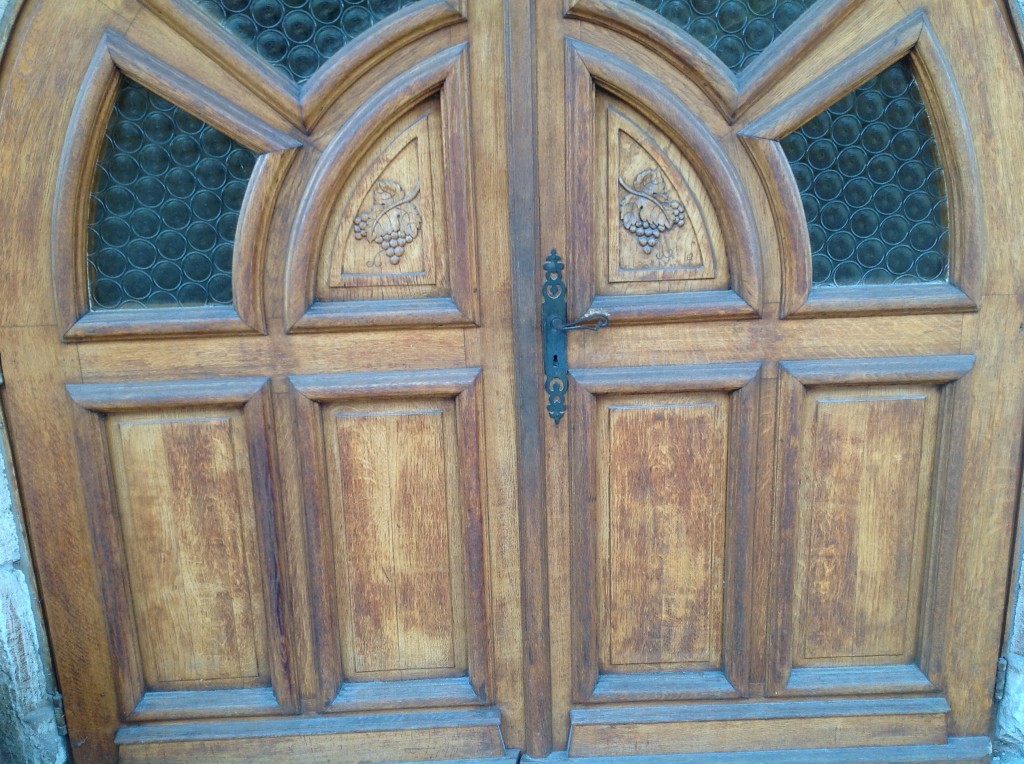
Notes:
[1] David Molyneux-Berry. Sotheby’s Guide to Classic Wines. New York: Ballantine Books, 1990, 144; Conseil Interprofessionnel des Vins d’Alsace, Colmar, 2011 (www.vinsalsace.com).
[2] Hanneke M. Wirtjes in Jancis Robinson, ed. Oxford Companion to Wine, Oxford, 1994, 219. Einhard, 28.
[3] Einhard, Life of Charlemagne 24
[4] Norman Cantor, ed. Encyclopedia of the Middle Ages. New York: Penguin/Viking, 1999, 99-101, 110-11.
[5] Wirtjes, 219.
[6] ibid.
[7] Hieronymus Bock. De stirpium commentariorum libri tres, Strassburg (Strasbourg), 1552. Note also his Neu Kreuter Buch von underscheydt, wackung und namen. Strassburg (Strasbourg), 1539; Brian W. Ogilvie. “The Many Books of Nature: Renaissance Naturalists and Information Overload.” Journal of the History of Ideas 64.1 (2003) 31-33.
[8] Conseil Interprofessionnel des Vins d’Alsace, Colmar, 2011 (www.vinsalsace.com).
[9] Ian Jamieson in Jancis Robinson ,ed. Oxford Companion to Wine, Oxford, 1994, 791-3.
[10] Don and Petie Kladstrup. Wine and War: The French, the Nazis, and France’s Greatest Treasure. Broadway / Coronet, 2001. I’ve also recommended this delightful book for my course HIST 177 History of Wine, Stanford, 2012.
[11] Michael Broadbent. The New Great Vintage Wine Book. New York: Knopf / Christies, 280-9.
[12] Deutscher Wein Statistik, German Wine Institute, 2008, Tables 3-4, pp. 7-8.
[13] In New York, these Leitz wines can be obtained from Michael Skurnik Wines, 575 Underhill Blvd., Suite 216, Syosset, NY 11791 (Phone: 516-677-9300 ext. 508, Fax: 516-677-9301, Email: [Kevin Pike] kbpike@skurnikwines.com, Website: www.skurnikwines.com)
[14] Tom Stevenson. The New Sotheby’s Wine Encyclopedia. New York: Dorling Kindersley, 2001 ed., 186.